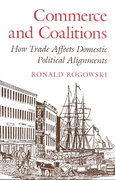Question
Problem 3. WSJ New CEO Wants to Make Barnes and Noble Your Local Bookstore (25 points) https://www.wsj.com/articles/british-bookseller-plots-turnaround-at-barnes-noble-11565258401 a. (8 points) List the main characteristics of
Problem 3. WSJ New CEO Wants to Make Barnes and Noble Your Local Bookstore (25 points) https://www.wsj.com/articles/british-bookseller-plots-turnaround-at-barnes-noble-11565258401 a. (8 points) List the main characteristics of a monopolistically competitive market. How does this market structure differ from perfect competition? How does it differ from monopoly? Briefly explain why the market served by Barnes & Noble and other bookstores is not perfectly competitive. b. (5 points) The article states that "...readers shunned the [Barnes & Noble] stores in recent years." Cite two reasons for the decline in the fortunes of the bookstore chain. c. (6 points) The demand curve for a product sold by a monopolistically competitive firm is downward-sloping but relatively flat. Explain what this type of demand curve implies about the ability of the firm to increase the price of this product. d. (6 points) James Daunt, the CEO of Britain's Waterstones bookstore chain, wants to make Barnes & Noble stores more like Waterstones stores: "You should do what you want; there are no restrictions on what books you stock...Each bookshop is quite individual." Propose two strategies for bookstores to differentiate themselves from competitors. What does differentiation imply for the price elasticity of demand?
Step by Step Solution
There are 3 Steps involved in it
Step: 1

Get Instant Access to Expert-Tailored Solutions
See step-by-step solutions with expert insights and AI powered tools for academic success
Step: 2

Step: 3

Ace Your Homework with AI
Get the answers you need in no time with our AI-driven, step-by-step assistance
Get Started


